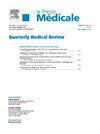How to improve results after DCD (donation after circulation death)
Abstract
The shortage of organs for transplantation has led health professionals to look for alternative sources of donors. One of the avenues concerns donors who have died after circulatory arrest. This is a special situation because the organs from these donors are exposed to warm ischaemia-reperfusion lesions that are unavoidable during the journey of the organs from the donor to the moment of transplantation in the recipient. We will address and discuss the key issues from the perspective of team organization, legislation and its evolution, and the ethical framework. In a second part, the avenues to improve the quality of organs will be presented following the itinerary of the organs between the donor and the recipient. The important moments from the point of view of therapeutic strategy will be put into perspective. New connections between key players involved in pathophysiological mechanisms and implications for innate immunity and injury processes are among the avenues to explore. Technological developments to improve the quality of organs from these recipients will be analyzed, such as perfusion techniques with new modalities of temperatures and oxygenation. New molecules are being investigated for their potential role in protecting these organs and an analysis of potential prospects will be proposed. Finally, the important perspectives that seem to be favored will be discussed in order to reposition the use of deceased donors after circulatory arrest. The use of these organs has become a routine procedure and improving their quality and providing the means for their evaluation is absolutely inevitable.

 求助内容:
求助内容: 应助结果提醒方式:
应助结果提醒方式:


